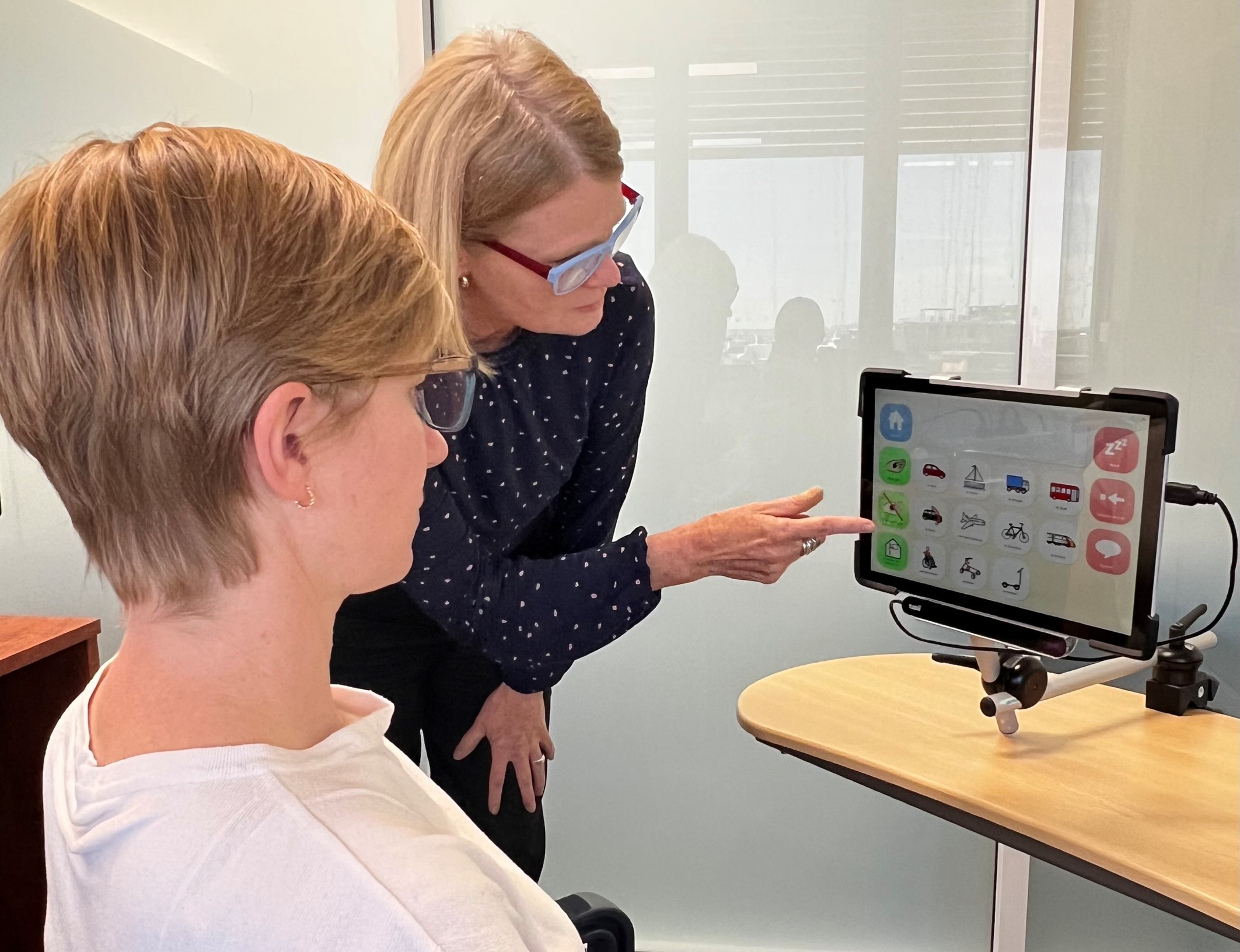Communication and assistive technology giving voice to people with motor neurone disease
Imagine no longer being able to communicate verbally and how this would impact on your ability to have a conversation with your family and friends, to do something as simple as asking for a cup of coffee or discussing more complex topics such as Advance Care Planning.
The Communication and Assistive Technology (CAT) Service was established by the Speech Pathology Department at St George Hospital to support people who have complex communication needs or are no longer able to use their hands to send a text message, write an email, or access the internet.
For many people diagnosed with motor neurone disease (MND) this can quickly become their reality if they don’t have access to assistive technology to support either their verbal or written communication. Assistive technology refers to equipment, systems, or software designed to help individuals with a communication impairment to express themselves.
The CAT Service, which is run by Speech Pathologist Val Maynes, allows people to trial a variety of alternative methods of communicating, such as tablets with text-to-speech apps, dedicated speech generating devices, an eye gaze system (using the eyes to make choices on a screen), or a head mouse. The service is incredibly person centered, taking on individual needs of the client and their family to provide an alternative method of communicating. If a client has cloned their voice, it can be used through one of these alternative communication methods when the person’s ability to speak clearly changes. An eye gaze system can also be used by people who have limited, or no function left in their upper limbs.
The technology continues to evolve and people with MND are now able to access voice cloning for free. It allows people who know they will eventually lose the ability to speak to create a cloned voice before this happens.
“The technology allows the person to retain a sense of self and to be able to use a cloned voice to speak to their loved ones that very much sounds like them,” said Val Maynes, CAT Service Speech Pathologist.
CAT Service patient, Elizabeth M. was impressed by the technology. “What a fantastic example of voice recognition,” she said. My daughter and I were amazed at how my ‘cloned’ voice sounded exactly like me. It’s a fabulous tool for MND sufferers”.
Published 24 June 2025.
